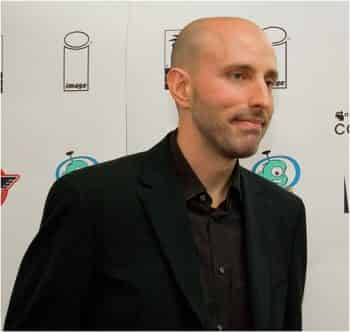
Comicbook and web
The Internet and critiques
In his retrospective on Seven, Matt Goldberg said: “We can fill in excuses, but the tightness of the script does leave these flaws a bit glaring, although none of them derail the movie because we’ve been trained to accept movie serial killer logic, and the film isn’t really about the particulars of his plan as much as what that plan means.” (“The Film of David Fincher: SE7EN,” collider.com, September 23, 2014). As a reader or a viewer, we are ready to accept a little improbability in a work, and if we’re captivated, we forget about it. For example, in the good years of the series 24, there were tons of inconsistencies that we could see after the fact, but while we watched, the pace had us totally hooked.
But the Internet spoils some of this magic. There are sites specialized in systematic nitpicking. Pre-Internet, such critiques existed but they had a limited field of action. But now, the playing field is wide, wide open. Here’s Matt Singer on this phenomenon: “There’s something else at work here beyond simple popularity, though. As detailed in a recent study reprinted at Smithsonian.com, while ‘joy moves faster than sadness or disgust,’ on social media, ‘nothing is speedier than rage.'” (“Nitpicking the Nitpickers,” thedissolve.com, August 25, 2014). This situation creates a weird atmosphere, where creators fear popular judgement, and where a whole industry of destructive creation comes into play. To be clear, we’re not rejecting this type of critique, which is often accurate. We’re only complaining that they have become a pretty standard form of clickbait.
.
Taking time to retrace our steps
We were always annoyed about how some comic book authors always felt they had to take a page or two to summarize past events. When we first picked up a comic book, we fell into a story arc whose ramifications went back several issues. We adapted.
However, more recently we read an interview with Mark Waid, who said: “Every once in a while, you’ll get some criticism from a fan who goes, “Yeah, yeah. I know all about Mega Crime. Stop beating a dead horse.” And I’m thinking, “Look, it’s awesome you’ve been keeping up with the book, but have some mercy or compassion for somebody who might be picking it up for the very first time.” (Oliver Sava, “Mark Waid on his Personal Digital-Comics Revolution,” July 10, 2012, http://www.avclub.com)
This was something of a revelation for us and we decided to integrate a summary of the past ramifications of the story we’re currently developing. The question was how to present it. We didn’t just want a straightforward summary. In a discussion with one of our collaborators, we were reminded of the importance of our timeline, and we decided to make use of that. It lets us integrate four dimensions: a short summary, a few key drawings, and the timing of the events.
Self-promotion
Twenty years before Web publication was possible, Todd McFarlane had already identified the main benefits of auto-production: “I don’t got no lawyers. I don’t got no PR people. I don’t got no licensing people. I ain’t got shit! I hate to say it but I just proved that half those jobs at Marvel and DC are worthless. They could get rid of all of those guys and it’s not really going to affect the sales of their comic books, if you’re doing a comic book that taps into the heart of what the kids want right now. You don’t need a battery of people to produce big sales. What you need is a comic book that’s either good, glitzy, or happens to be tapping into whatever’s hot that week” (Gary Groth, “…That’s the Spice of Life, Bud: The Todd McFarlane Interview,” The Comics Journal, #152, August 1992).
If it ain’t broke…
We happened upon an interview with Michael G. Wilson, who explains the success of the Bond franchise. One of the points he makes is that the team tried to reinvent the myth before it could become too hackneyed (Edward Cross, “Skyfall Exclusive: An Interview with Producer Michael G. Wilson,” www.comicbookmovie.com, February 13, 2013). Similarly, Harvey Weinstein admits he made some mistakes in promoting the movie The Master, which resulted in it not reaching its audience (Sean O’Connell, “Harvey Weinstein Admits He Mis-Marketed The Master,” www.cinemablend.com, January 29, 2013). These two statements in our opinion demonstrate a kind of humility: admitting our errors allows us to learn something that can be applied to similar situations in the future.
The viability of webcomics
We’re coming back to ideas we’ve already discussed but with new references that provide food for thought. Brian Wood recalls a simple truth about the comic book industry: “This is a job. This is a business, not a hobby or a social activity. That may sound a little cold, and it doesn’t mean I don’t get immense creative satisfaction from doing what I do (if I didn’t, I’d go be a stockbroker or something) but it’s about finding the right balance. Not making business decisions based on being a fan, or social pressure, or making too many allowances for the quirks of this industry” (Graem McMillan, “Wood: Comics is a Business, Not a Hobby or a Social Activity,” Newsarama, January 2, 2013).
Falcone however adds an important nuance that makes a big difference: the idea of teamwork. “Compared to other industries, I find it surprising and overwhelming how pedagogy and mentorship is so deeply ingrained as part of the comic book industry. I’ve seen creator after creator look at someone’s work and give advice and pass on years of wisdom because someone did it for them. Comic creators believe in returning kindness and helping aspiring talent” (Anthony Falcone, “Breaking into the Comics the Marvel Way,” www.comicbookdaily.com, May 30, 2013).
Despite this, the commercial aspect can’t be ignored because creating comics costs money even if you are publishing your work online yourself. This is because comic require a high production rate, which entails certain labour costs (“Mark Waid on the True Cost of Digital,” http://www.comicsbeat.com, January 1, 2013).
These costs mean that even artists like Mark Waid wonder about how to generate revenue (“Holiday Interview #22 – Mark Waid,” www.comicsreporter.com, January 22, 2013). In the same interview Waid sees the industry moving to a more direct and personal relationship between creator and fans. In such an environment how is it possible to generate mass revenues without losing the direct contact?
The Future of Comics in the Web Ara – Part IV
The digital allows creators to exercise more control over their work. They have access to a publishing platform that’s much less expensive than traditional distribution networks.
On the other hand, creators now have to be entrepreneurs (Bruce Lidl, “2012: Year of the Artist-Entrepreneur?” comicsbeat.com, January 6, 2012). With increased control over one’s work comes greater risk, and creators must now play a more active role in promotional activities. And more importantly, in our opinion, they also have to develop a business model that will allow them to make a living from their art.
The Future of Comics in the Web Ara – Part III
Digital publication can be an opportunity to realign the value readers give to comic books and to broaden traditional readership. “Interestingly the survey did indicate that 57% of the digital readers did read print comics, while just 16% of the print readers had purchased or read digital comics. Also of interest are the top reasons that readers preferred one format or the other. Digital readers preferred reading comics digitally because they provided immediate access (which could mean that many of these readers don’t have access to a convenient comic shop), and they also like the convenience and easy storage and portability of digital comics.)” (“DC Retailer Survey Results: Older, Male, Middle-class, Avid,” comicsbeat.com, February 10, 2012). This indicates that the digital and physical markets reach two relatively different groups of readers. But this is no reason to fear the new medium.
Neil Gaiman explains that he first became interested in artwork piracy on the Web when he was looking into the issue of violations of his own copyright. He quickly realized something strange: sales increased in areas where his comics were being pirated. For example, his work is most pirated in Russia but that’s also where they have the highest sales.
Intrigued, he convinced his publisher to experiment by making one of his most popular comics, American Gods, which has consistently good sales, available for free on the Internet for one month. Sales of the series increased 300%. (« Neil Gaiman explique son point de vue sur le piratage », www.comicsblog.ff, August 19, 2012).
The Future of Comics in the Web Ara – Part I
There are currently several phenomena converging to change the comic-book industry. Daniel Champion pinpoints one of these in “Will the Digital Age in comics give birth to a new animal? “ (“The Digital Age,” www.comicbookdaily.com, December 13, 2011). We believe one of the top issues of the digital era should be to refocus on regularity of publication. Historically, comic books were published consistently: every month, the reader would find a new issue of his or her favourite hero. In recent years, publishers have been slacker about scheduling, and analysts wonder about the impact of this. (“Creators, Deadlines and Consistency,” www.comicbookdaily.com, November 25, 2011). The Web makes this even more important. Creating faithful readers requires discipline about publishing at a frequency that’s suitable for this new environment. As Todd Allen said, “Baldwin points out that if this is how people are reading the content in digital format, maybe the 20-22 page comic isn’t the way to go online. The science of branding is all about repetition. If you want to get people into the habit of buying your comic, Baldwin reckons it will take 6-8 touches to make someone a fan, so it might make more sense to release 8 pages 3 x a month (almost weekly) or maybe 5 pages each week. (“How Many Pages of a Digital Comic Get Read in One Sitting?” comicsbeat.com, February 24, 2012).
The Use of Electronic Media
In this era of social media, it’s very easy to share one’s opinions. But we gave ourselves two lines of conduct to follow. Here are two quotes that perfectly encapsulate how we feel about this issue Brian K. Vuaghan, writer of the SAGA series and screenwriter for the TV series Lost , had this to say about Twitter, during an interview: “I think that writing is a thing I can only do when I have to do it and it’s going toward a piece of fiction. I don’t have it in me to write just for the hell of it” (“Interview: Brian K. Vaughan on SAGA, Lost, Twitter and more,” The Beat, March 14, 2012, comicsbeat.com). And Anthony Falcone stated a simple truth, but one that’s still worth quoting: “It’s always very easy to write about why you don’t like something. […] It is harder to talk about some of the things we like without sounding like mindless automaton fanboys” (Anthony Falcone, “Why I like Comic Books,” www.comicbookdaily.com, January 31, 2012).
We thought carefully about how we would use our Facebook page, in an effort to avoid cannibalizing the additional content we offer on our Website. We decided to clearly define the angle we would take on Facebook, limiting the topics we would be discussing there in order to avoid talking about a great many topics but in a very superficial way.
For these reasons, we are not using Twitter, which would require a too-high production rate for us. We want avoid creating poorly thought-out content.
Story density
Many people bemoan the fact that stories published by Marvel are increasingly fast reads. Authors are now trying to write only what’s essential, and we agree with this approach to scripting scenes. However, one of our collaborators pointed out recently that there are also fewer panels per page, which reduces how much the reader is getting out of reading. Webcomics get around this problem because it offers comic strips for free, which eliminates the issues readers may have with the cost and time involved in reading a strip.








